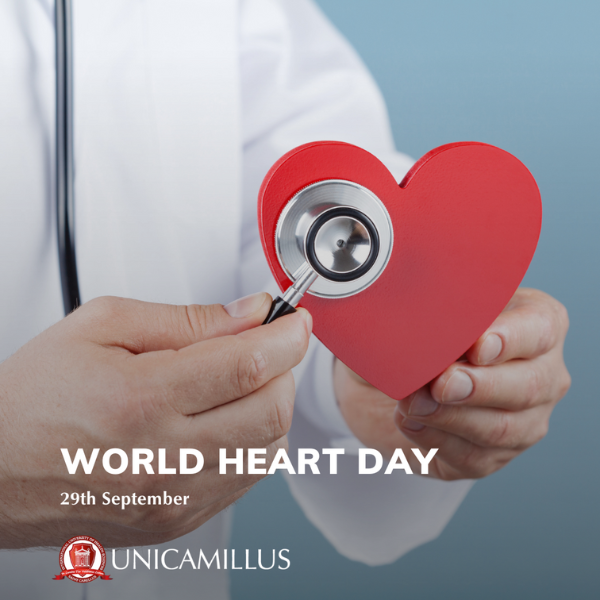Cardiovascular diseases are the leading cause of mortality worldwide, but prevention can make a difference
World Heart Day is celebrated on 29th of September and was established by the World Heart Federation. Its goal is to raise awareness among citizens about the importance of cardiovascular prevention. While cardiovascular disease (such as heart diseases and strokes) is among the leading causes of death globally, prevention can truly make a difference in this field.
According to the Italian National Institute of Health’s website, cardiovascular diseases represent the leading cause of death in Italy, accounting for 44% of the total deaths. Ischaemic heart disease ranks first (28% of total deaths), with cardiovascular accidents ranking third (13%) right after cancer. Moreover, those who survive a cardiovascular event often continue to experience its consequences. Patients become chronic sufferers, and with age, physical and cognitive disabilities often accompany them, significantly affecting their quality of life and incurring economic and social costs (23.5% of pharmaceutical expenses in Italy are allocated to heart medications).
The data from the rest of the world is alarming, too. According to a recent study conducted by American researcher Emelia J. Benjamin (Boston University), a staggering 17.6 million people die from heart attacks and related diseases globally every year.
However, as we have already mentioned, there is a significant positive aspect in this dramatic scenario: prevention is possible and highly effective. Many cardiovascular events can be avoided by adopting a healthy and active lifestyle. Additionally, genetic predisposition plays a key role, which encourages those with family members suffering from heart conditions to undergo regular medical check-ups.
In order to have a more understandable picture of the situation, we asked Professor Francesco Prati, a professor in Cardiovascular Diseases on the UniCamillus MSc in Medicine and Surgery and MSc in Dentistry and Dental Prosthetics, some questions.
Cardiovascular Diseases: Symptoms and Causes
What are the most common cardiovascular diseases? “Ischaemic heart disease is very common in Western countries,” says Professor Prati. “In a nutshell, it is due to cholesterol build-up: narrowing of the heart’s arteries can cause angina or, in severe cases, a heart attack. Also, valvular diseases, particularly aortic stenosis, which is prevalent in the elderly, and primary cardiomyopathies or diseases of the heart muscle that are also relatively common.
Symptoms that should cause concerns can vary, such as chest pain, shortness of breath, swollen legs and palpitation. In these cases, it is necessary to consult a cardiologist.
However, there are also conditions that can manifest after a silent period. “The development of atherosclerosis typically occurs without significant evidence,” explains Professor Prati. “This is why it’s good to resort to neck vessel ultrasound or, in some cases, coronary CT scans to detect potential narrowing. In such cases, it is important to start lipid-lowering therapy to maintain cholesterol at very low levels.”
Routine check-ups are, therefore, fundamental. “Cardiology visits with echocardiography are essential to rule out atherosclerosis or identify heart dysfunctions, which can initially progress silently.”
It is a common belief that heart diseases generally affect the male population more, but this is a myth that needs to be debunked, as our Professor explains:” Women are protected from atherosclerosis and its complications while fertile, but after the age of 50, the risk of heart diseases becomes very similar to that of men.”
Prevention and Therapy
Given these risks, prevention plays a crucial role. “To prevent atherosclerosis, it is essential to follow healthy lifestyle habits: avoid smoking, control blood pressure and cholesterol, manage diabetes (when present), and engage in regular physical activity while maintaining a healthy weight,” advises Professor Prati. “After the age of 50, heart check-ups are extremely important to rule out the possibility of atherosclerosis and, in general, assess the heart’s condition.”
Beyond prevention, if the disease is already present, finding the right combination of treatment is necessary. “Pharmacological therapies are increasingly advanced and, nowadays, are supported by guidelines established by the scientific community, providing valuable assistance to avoid therapeutic mistakes,” explains Professor Prati. “Furthermore, the concept of personalised medicine is gaining ground – an approach that places the patient at the centre of care and tailors treatment to a patient’s individual response.”

